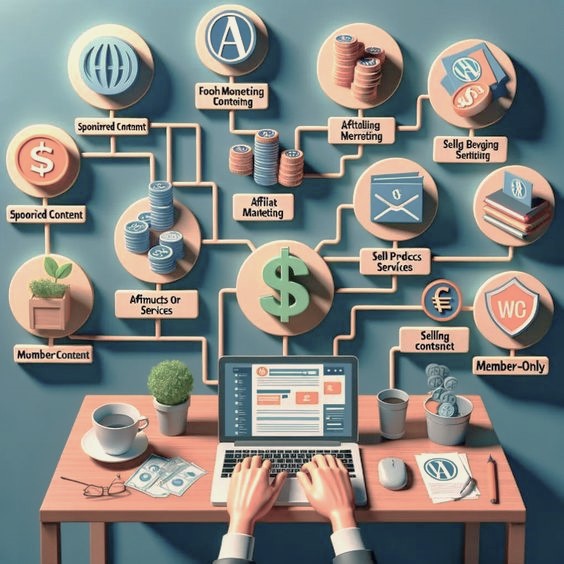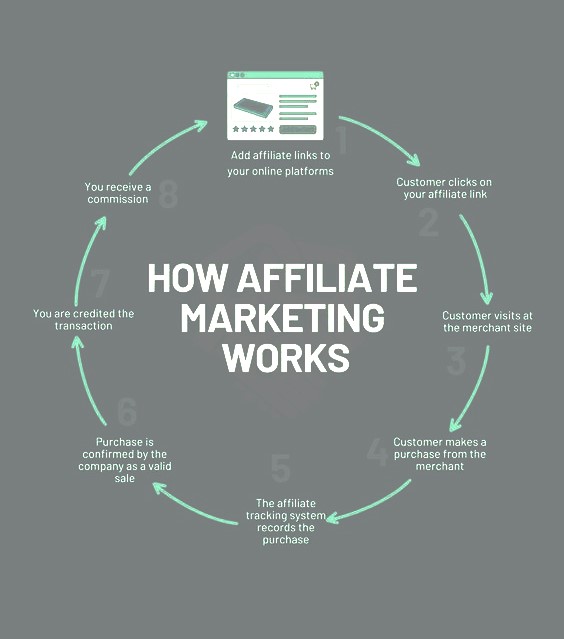I. Introduction
A. Definition and Evolution of Blogging
Blogging, a term derived from “weblog”, is a form of online journaling that has transformed over time. Initially, blogs were personal diaries shared online. Today, they have evolved into a platform for sharing knowledge, expressing ideas, and generating income.
B. The Rise of Blogging for Income
The potential of blogging as a revenue stream was realized as the digital age progressed. With the advent of monetization strategies like advertising, affiliate marketing, and selling products or services, blogging has become a viable source of income for many.
C. Importance of Blogging in the Digital Age
In the digital age, blogging holds significant importance. It serves as a platform for individuals and businesses to establish their online presence, share expertise, engage with their audience, and generate income. It’s a powerful tool for communication and a key element in digital marketing strategies.
II. Understanding the Basics of Blogging
A. Setting Up Your Blog
- Choosing a Niche: The first step in setting up a blog is choosing a niche. This is the specific topic area that your blog will focus on. It’s important to choose a niche that you are passionate about and knowledgeable in, but also one that has a sizable audience interested in that topic.
- Selecting a Domain Name and Hosting: The next step is to choose a domain name that reflects your niche and is easy to remember. Once you have a domain name, you’ll need to select a hosting provider. This is the company that stores your blog online and makes it accessible to the internet.
- Designing Your Blog: The design of your blog plays a crucial role in attracting and retaining readers. It should be visually appealing, easy to navigate, and reflective of your niche and personal brand.
B. Creating Compelling Content
- Crafting Engaging Headlines: The headline is the first thing readers see, so it needs to grab their attention and entice them to read more. It should be concise, intriguing, and give a clear idea of what the blog post is about.
- Developing High-Quality Content: The content of your blog posts should be high-quality, informative, and valuable to your readers. It should provide solutions to their problems, answer their questions, or entertain them in some way.
- Incorporating Visuals and Multimedia: Including visuals and multimedia in your blog posts can make them more engaging and easier to digest. This could be images, infographics, videos, or interactive elements.
III. Monetization Strategies

A. Advertising and Sponsorships
- Understanding Ad Networks: Ad networks are platforms that connect advertisers with bloggers who want to host ads. They serve as a bridge, allowing bloggers to earn revenue from their content. Google AdSense is a popular example of an ad network.
- Approaching and Attracting Sponsors: Sponsors can provide a significant income stream for bloggers. It involves partnering with companies relevant to your blog’s niche. The key to attracting sponsors is to build a strong, engaged audience and to present your blog as a valuable platform for the sponsor’s message.
- Balancing Ads with User Experience: While ads can generate income, it’s important to balance this with a positive user experience. Too many ads can deter readers. The goal is to integrate ads in a way that is natural and does not disrupt the reader’s experience.
B. Affiliate Marketing

- Choosing Relevant Affiliate Products: Affiliate marketing involves promoting other company’s products and earning a commission for any sales made through your referral. The key is to choose products that are relevant to your blog’s niche and would genuinely benefit your readers.
- Integrating Affiliate Links Effectively: Affiliate links should be integrated into your content in a way that feels natural. They can be placed within the text of a blog post, or in a dedicated “resources” page.
- Maximizing Earnings through Affiliate Marketing: To maximize earnings, focus on promoting high-quality products that you believe in, and build trust with your readers. This can lead to higher click-through rates and more successful referrals.
C. Selling Products or Services
- Developing and Selling Your Products: Bloggers can also earn income by developing and selling their own products. This could be an e-book, an online course, or even physical merchandise. The key is to create a product that meets the needs and interests of your audience.
- Offering Services and Consultations: If you have expertise in a particular area, you can offer services or consultations. This could be anything from freelance writing, to coaching, to design work.
- Building a Profitable Sales Funnel: A sales funnel is a step-by-step process that leads a prospect to a purchase. A well-constructed sales funnel can significantly increase your income by effectively marketing your products or services to your audience.
IV. Building and Engaging Your Audience
A. Social Media Presence
- Leveraging Different Platforms: Social media platforms are a powerful tool for building and engaging your audience. Each platform has its unique features and audience demographics. It’s important to choose the platforms that align with your blog’s niche and audience.
- Building Relationships with Your Audience: Social media provides an opportunity to build relationships with your audience. Engage with them by responding to comments, asking for feedback, and showing appreciation for their support.
- Using Social Media for Content Promotion: Social media can be used to promote your blog content. Share your blog posts on your social media platforms to reach a wider audience and drive traffic to your blog.
B. Email Marketing
- Building and Growing Your Email List: An email list is a direct line of communication with your audience. Offer incentives like free resources or exclusive content to encourage visitors to subscribe to your email list.
- Creating Effective Email Campaigns: Email campaigns can be used to share new blog posts, offer exclusive content, or promote products. The key is to provide value in each email and keep your audience engaged.
- Retaining Subscribers and Building Loyalty: Retaining subscribers is just as important as gaining new ones. Build loyalty by consistently providing valuable content, listening to your audience’s feedback, and showing appreciation for their support.
V. Overcoming Challenges and Staying Relevant

A. Adapting to Algorithm Changes
Search engines and social media platforms frequently update their algorithms. These changes can affect how your blog content is discovered and ranked. Adapting to these changes is crucial. Stay informed about these updates and adjust your content strategy accordingly to ensure your blog remains visible and accessible.
B. Staying Updated on Industry Trends
The digital landscape is constantly evolving. New trends emerge, old ones fade away. Staying updated on these trends is essential to keep your blog relevant and engaging. Attend webinars, follow industry leaders, read relevant articles, and always be open to learning and adapting.
C. Overcoming Writer’s Block and Burnout
Writing consistently can sometimes lead to writer’s block or burnout. It’s important to recognize this and take steps to overcome it. Take breaks when needed, seek inspiration from different sources, and remember why you started blogging in the first place. Your passion for your niche and your desire to share it with others can help you overcome these challenges.
VI. Tracking and Analysing Performance
![]()
A. Utilizing Analytics Tools
Analytics tools are essential for tracking and analysing your blog’s performance. Tools like Google Analytics provide valuable insights into your audience’s behaviour, including which posts are most popular, where your traffic is coming from, and how long visitors stay on your site. These insights can help you refine your content strategy and make informed decisions to improve your blog.
B. Key Metrics for Success
There are several key metrics that can indicate the success of your blog. These include the number of unique visitors, page views, average time spent on the site, bounce rate, and conversion rate. Monitoring these metrics can help you understand what’s working, what’s not, and where there’s room for improvement.
VII. Case Studies and Success Stories
A. Showcasing Real-Life Examples
Real-life examples provide tangible proof of the concepts discussed in this guide. They demonstrate how others have successfully implemented these strategies and achieved results. These examples can serve as a source of inspiration and a roadmap for readers to follow.
B. Learning from Successful Bloggers
Successful bloggers are a wealth of knowledge. They’ve navigated the challenges of blogging and found strategies that work. By studying their journey, readers can gain insights and learn valuable lessons that can help them in their own blogging journey.
VIII. Conclusion
We’ve covered the journey of blogging, from setting up your blog, creating compelling content, to monetizing your blog. We’ve also discussed building an audience, overcoming challenges, and tracking performance.
Remember, success in blogging doesn’t happen overnight. It requires patience, consistency, and a willingness to learn. Keep pushing forward, stay focused on your goals, and you’ll see progress in your blogging journey.


